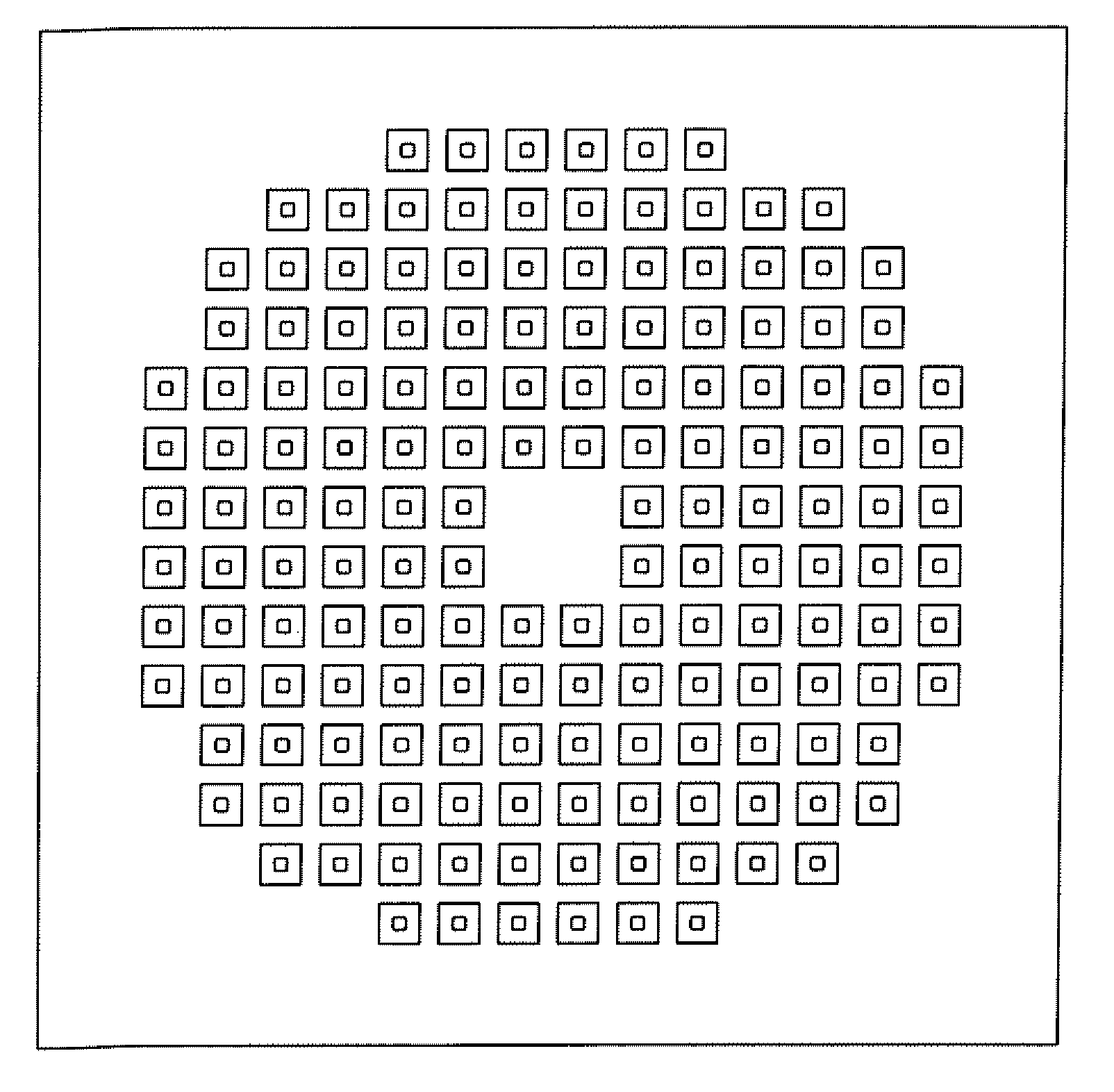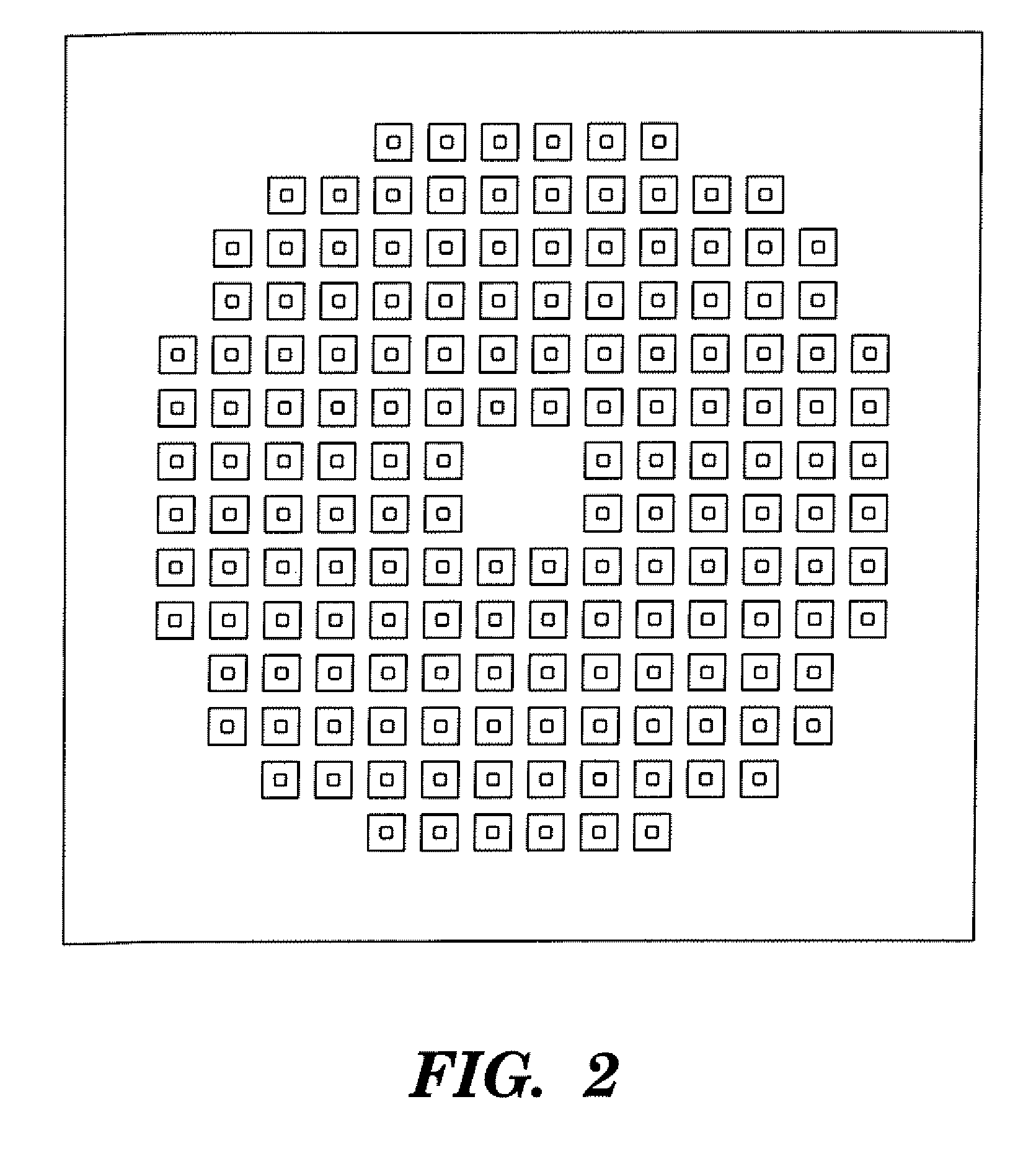Ultrathin porous nanoscale membranes, methods of making, and uses thereof
a nanoscale membrane and ultra-porous technology, applied in the field of ultra-porous nanoscale membranes, can solve the problems of inability to achieve small pores that eventually clog with small molecules, and inability to use in rapid separation procedures. large-scale production of this type of membrane is impractical, and the process could be very easily automated, cost-effective, and not time-consuming
- Summary
- Abstract
- Description
- Claims
- Application Information
AI Technical Summary
Benefits of technology
Problems solved by technology
Method used
Image
Examples
example 1
Formation of Nanocrystalline Silicon Membranes
[0112] Pnc-Si membranes were fabricated by the procedure outlined in FIG. 1. A 500 nm thick layer of SiO2 on both sides of a silicon wafer was first grown by placing it in a semiconductor tube furnace at 1000° C. for 2 hours in an ambient of oxygen and steam. On the backside of the wafer, the SiO2 was patterned using standard photolithography techniques to form an etch mask for the membrane formation process. The etch mask for each membrane included a square-shaped opening centrally positioned within a square border (up to 120 masks have been formed on a single silicon wafer). The front oxide layer was then removed by exposing the surface to 4:1 BOE, for 10 minutes, in an etching cell similar to that used for EDP etching, and a high quality three layer film stack (20 nm-SiO2 / 15 nm-amorphous silicon / 20 nm-SiO2) was RF magnetron sputter deposited on the front surface. The a-Si layer was sputtered at a chamber pressure of 15 mTorr in Ar wi...
example 2
Formation of Additional Nanocrystalline Silicon Membrane
[0117] The procedure described in Example 1 was used to form a 7 nm a-Si layer sandwiched between two 20 nm layers of SiO2 using sputter deposition; the silicon was then annealed at 950° C. for 30 sec to form a nc-Si layer. After release, a wrinkled membrane similar to other oxide membranes was formed (FIG. 10A). However, after the removal of the sacrificial SiO2, with a 25 second dip in buffered oxide etch (BOE), an extremely flat 7 nm ne-Si membrane was produced (see FIGS. 10B-C). This dramatic shift from compressive to tensile stress was unexpected, yet is indicative of the volume contraction that occurs when a-Si is crystallized (Miura et al., Appl. Phys. Lett. 60:2746 (1992), Zacharias et al., Journal of Non-Crystalline Solids 227-230:1132 (1998), which are hereby incorporated by reference in their entirety). Since the oxide remains compressively stressed after annealing and is much thicker than the a-Si, the overall film...
example 3
Physical Properties of Porous Nanocrystalline Silicon Membranes
[0122] In addition to TEM, several other characterization techniques have been used to confirm the properties of the pnc-Si membranes according to the present invention. FIG. 9A shows refractive index dispersion data obtained using spectroscopic ellipsometry for a 15 nm thick silicon film after deposition (a-Si) and after crystallization (pnc-Si) (Tompkins et al., “Spectroscopic Ellipsometry and Reflectometry—A User's Guide,”Wiley &Sons, Inc., New York, (1999), which is hereby incorporated by reference in its entirety). The sputtered a-Si has high optical density, comparable to microelectronic quality a-Si deposited with chemical vapor deposition (CVD), and exhibits a clear shift in optical properties after crystallization, with characteristic resonance peaks similar to crystalline silicon (Palik, E. D. “Handbook of Optical Constants of Solids,” (Academic Press, Orlando) pp. 547-569 (1985), which is hereby incorporated ...
PUM
| Property | Measurement | Unit |
|---|---|---|
| Pore size | aaaaa | aaaaa |
| Thickness | aaaaa | aaaaa |
| Thickness | aaaaa | aaaaa |
Abstract
Description
Claims
Application Information
 Login to View More
Login to View More - R&D
- Intellectual Property
- Life Sciences
- Materials
- Tech Scout
- Unparalleled Data Quality
- Higher Quality Content
- 60% Fewer Hallucinations
Browse by: Latest US Patents, China's latest patents, Technical Efficacy Thesaurus, Application Domain, Technology Topic, Popular Technical Reports.
© 2025 PatSnap. All rights reserved.Legal|Privacy policy|Modern Slavery Act Transparency Statement|Sitemap|About US| Contact US: help@patsnap.com



